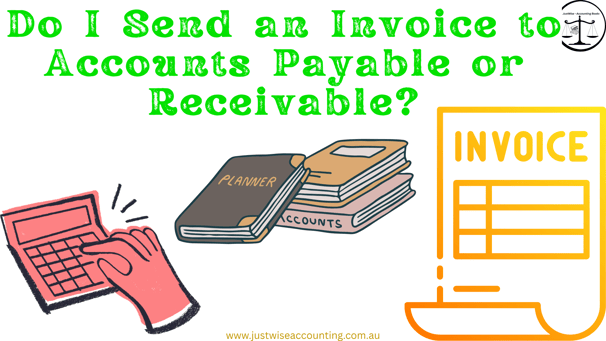Do I Send an Invoice to Accounts Payable or Receivable?
Unsure who should receive your invoice — accounts payable or receivable? Learn the difference and what small businesses need to know.
Justwise Accounting
2 min read


Do I Send an Invoice to Accounts Payable or Receivable?
This is one of the most common questions business owners and new bookkeepers face:
Do I send an invoice to accounts payable or accounts receivable?
The short answer? It depends on whether you’re sending or receiving the invoice — and on your role in the transaction.
Let’s break it down in plain terms so you know exactly what to do.
First, Understand the Basics: AP vs AR
Accounts Payable (AP): This is the department or account in a business that handles bills and payments. It’s where you pay others.
Accounts Receivable (AR): This is the department or account that handles incoming money. It’s where others pay you.
Think of it this way:
If you are the Supplier (you are owed money) )Their Accounts Payable Customer (you owe money
If you are the Customer (you owe money) ) Your own Accounts Payable
Scenario 1: You Are the Supplier or Service Provider
You’ve delivered work or goods and need to get paid.
In this case:
You send your invoice to your customer’s Accounts Payable department.
Why? Because that’s the team or function responsible for paying invoices.
They will process it, match it to a purchase order (if applicable), and schedule payment according to their internal payment terms.
Scenario 2: You Are the Buyer or Client
You’ve received a service or goods, and now you’ve been sent an invoice.
In this case:
You (or your bookkeeper) should log the invoice under your own Accounts Payable system.
It becomes a liability — money your business owes.
You don’t send the invoice anywhere. Instead, you process and prepare payment.
A Quick Rule of Thumb
To avoid confusion:
If you’re getting paid → Send the invoice to their AP
If you’re paying someone → Enter the invoice into your AP
Never send invoices to accounts receivable — that’s used for tracking incoming money from your side, not handling supplier bills.
Why This Matters for Small Business Owners
Getting this wrong can delay payments, create accounting confusion, and damage credibility with clients or suppliers.
Here’s how to stay on top of it:
Always ask for the correct AP contact when onboarding a new client
When you receive invoices, review for accuracy and due dates before logging them in your system
Use your software (like Xero or MYOB) to track AP and AR separately — mixing the two leads to cashflow errors
Common Mistake: Sending to the Wrong Email or Department
Many businesses make the mistake of sending invoices to a general admin inbox or a sales contact. This often delays payment because:
It’s not tracked properly
It’s missed in the workflow
It doesn’t get logged in their AP system
To avoid this, always confirm:
“Could you please confirm the best contact for accounts payable for invoicing purposes?”
It’s a small step that can prevent a lot of chasing later.
Final Thoughts
So, do you send an invoice to accounts payable or receivable?
If you’re the one providing the goods or service, send it to the Accounts Payable department of your client. That’s the team who will handle your payment.
If you’re the one receiving an invoice, log it into your own Accounts Payable system — and make sure it gets paid on time.
Clear systems on both sides help everyone work faster, get paid sooner, and stay focused on what really matters: running the business.
Need help setting up efficient invoicing systems or managing your AP/AR reports? Justwise Accounting can help you implement the right tools and processes to stay organised and confident with every transaction.
Stay in Touch
© 2025 JustWise Accounting. All rights reserved. ABN 85 581 353 385
⚠️ We respect your privacy. Unsubscribe anytime. (under subscribe button)
Serving Australia-wide
Justwise acknowledge the Traditional Owners of the lands where we operate and pay respect to Elders past and present.
